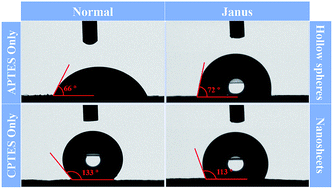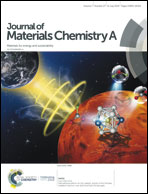Tailored Janus silica nanosheets integrating bispecific artificial receptors for simultaneous adsorption of 2,6-dichlorophenol and Pb(ii)†
Abstract
Potentially toxic dichlorophenols and heavy metal ions commonly coexist in industrial sewage, posing a serious threat to public health and the environment and making the treatment more challenging. Inspired by Suzhou bifacial embroidery, whereby the Janus-like planar structure allows different compositions to be compartmentalized onto two distinct surfaces, Janus silica nanosheets partitioning bispecific artificial receptors (i.e., molecularly imprinted sites and thiol groups) onto distinct recognition surfaces (J-MIPs/cys) were designed to independently take up 2,6-dichlorophenol (DCP) and Pb(II). For J-MIPs/cys, the thiol groups are expected to capture Pb(II) via chelating action and molecularly imprinted cavities act as highly specific recognition sites for DCP. J-MIPs/cys possessed uniform cross-sectional dimensions and thickness (∼25.3 nm), and a particle-like surface imprinted layer (∼21.8 nm). In the monocomponent system, J-MIPs/cys displayed fast binding kinetics (60 min and 45 min), large monolayer adsorption capacity (129.4 mg g−1 and 82.95 mg g−1), high affinity, and excellent regeneration after five reuse cycles (9.134% and 12.16% loss in adsorption amounts) for DCP and Pb(II), respectively. Additionally, a spontaneous and endothermic adsorption process was also confirmed. In a binary system, the presence of Pb(II) produced a prominent increase in DCP adsorption at high initial concentrations and a decrease at low initial concentrations, owing to the partial complexation of Pb(II) with excess DCP and occupation of imprinted sites by Pb(II). However, the uptake of Pb(II) was inhibited over the whole range of concentration in the presence of DCP due to the competitive adsorption onto thiol groups. In summary, J-MIPs/cys integrating novel bispecific receptors open wide possibilities for efficient and specific treatment of coexisting toxic pollutants.



 Please wait while we load your content...
Please wait while we load your content...